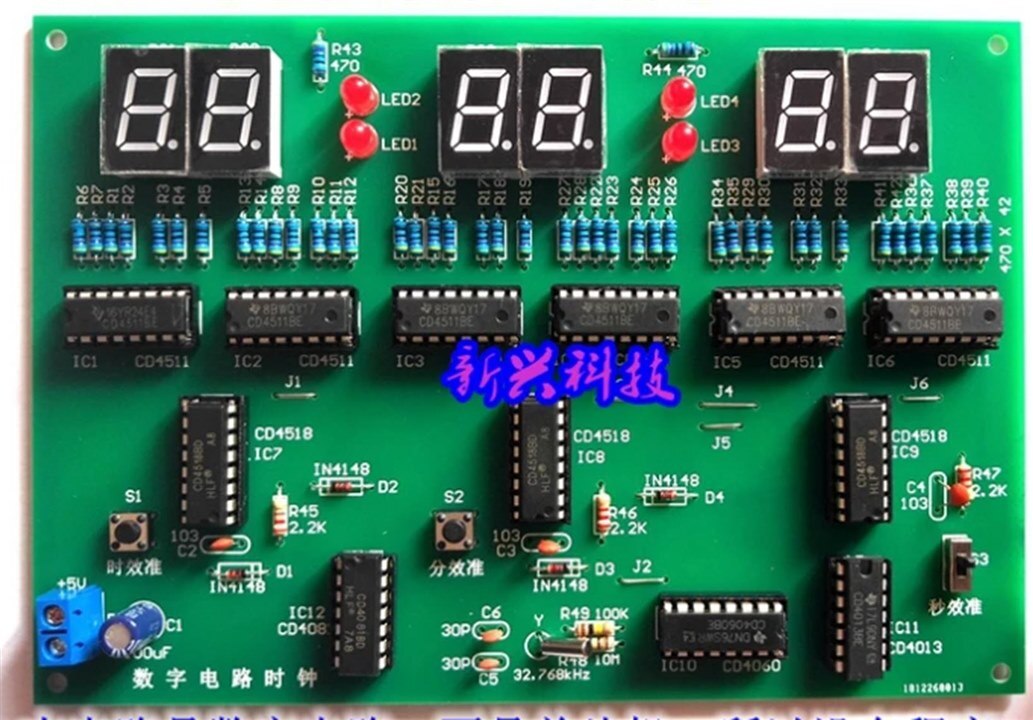What Components use to make digital clock?
Be sure to click 'more' and select 'suggest as answer'!
If you're the thread creator, be sure to click 'more' then 'Verify as Answer'!
Funnily enough, I had success answering a question similar to this, from an 8-year old.
It was answered over several weekends.
The kid was already familiar with lighting an LED with a battery and resistor, that was the only pre-requisite.
The first step was to teach him binary. The 8-year old took to it well, and I would quiz him whenever I saw him to convert a random number from binary to decimal or vice-versa.
Initially he needed a pen and paper, but it didn't take long before he could do it mentally. The _reason_ for learning binary was easy - it was considered an extension of using an LED to send signals (like Morse code), and instead using many LEDs to send a bigger code.
The next step we did was to use a clock trainer board and a multimeter.
 (Image source: aliexpress)
(Image source: aliexpress)
We inspected it from the center-outward. We used a multimeter on one of the center row of chips, and saw that each hour or minutes digit corresponded to the binary value that was on the chip (using google to see the chip pinout). That was easy to do by simply writing each voltage on paper, because the hours or minutes do not change quickly. We could also see the pulses on the chip corresponding to the seconds.
Then we tried to figure out what the chips on top do, and googled for that too. It didn't take long to figure out it was doing a conversion from 4 binary signals to 7 segments.
Some of the rest of the understanding of the lower components was theoretical, but it was easy to show why the metal can's crystal had to oscillate 32768 times per second.
The 8-year old now broadly knows how a clock works and what parts are needed.
I have a crystal oscillator that I'm testing on the bench now. It's currently drifting at a rate of about 0.15ppb (parts per billion) per hour.
So in 1 year it will change by about 1.2ppm (parts per million)
Although I'm hoping it will drift less when it has settled down.
Which means it should be less than 20 seconds out after 1 year.
I had been wondering if you could make a clock that never needs resetting in a lifetime - it would need to 100x better than my oscillator.
What kind of clock are you thinking of ?
MK
Hi Michael,
It would be awesome to see a photo of it if it's not sensitive to share it. I'm guessing construction techniques within its enclosure matter a lot to make sure components don't flex etc.
Apparently Harrison No. 5 achieved 1/14th of a second a day, incredible to think that the temperature compensation was that precise with the metalworking techniques of the day! http://www.surveyhistory.org/john_harrison's_timepiece1.htm
I own a Timex watch that just happens to have an awesome crystal. It wanders 2 or 3 seconds per year for the first 3 years of a battery and gains about 10 seconds in the 4th year - when it is time to change the battery. I no longer wear a watch, but I still keep that lucky watch. I suspect it has larger excursions due to temperature, but they seem to average out over the course of a year.
The really awesome part is the cheapness and accessibility of the bits - no secrets.
I'll do a blog as soon as I get time
MK
You could use a PLL chip with a crystal ... for a digital clock signal ...
or do you mean a clock that measures time? Then you could use an RTC chip and a microcontroller with your choice of display technology. If you trust NTP, you could even forego the RTC and use a wireless microcontroller to synchronise its free running clock regularly.
Perhaps think about putting more detail into your question so that you can solicit useful replies.
- Gough